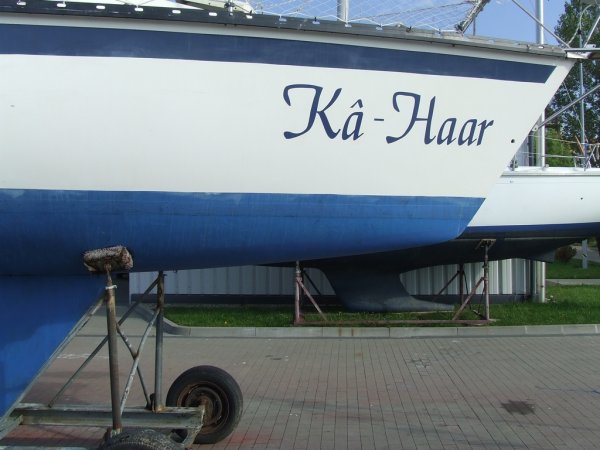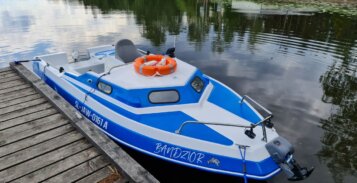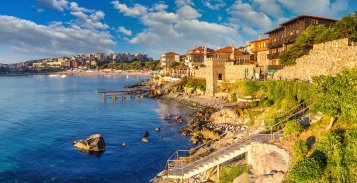
„I used Antifouling Sea-Line two seasons ago (in 2014). Before the beginning of the 2015 season, I painted the wooden rudder, ,,newly secured” with Le Tenkinios, a natural oil varnish, with Antifouling Sea-Line (in two layers). The remaining paint was used on the hulk and – to my surprise – I did not find any difference in the quality of antifouling security compared to the one made the year before. Similarly surprised was the boatswain who every single day launches yachts at my marina. He stated that many yachts were covered with shells but he did not find anything at my Ka-Haar. Making preparations for wintering, I cleaned the whole yacht therefore in the pictures there are white damp patches visible, the remains of the gelcoat cleaner.
Antifouling Sea-Line versus fouling at Zalew Szczeciński, the score is 2:0.
The third round „Antifouling Sea-Line versus fouling at Zalew Szczeciński” begins in just three months. My plan of the winter renovation works at the bottom includes securing minor mechanical damages, from the bottom and the rudder (max. 10 cm2), with antifouling paint. Instead of working hard at the renovation of antifouling surface, I will devote my winter evenings to reminiscing this year’s cruises.”
October 2015, text and pictures by Piotr6 (www.sailforum.pl)

Ci spiace, ma questo articolo è disponibile soltanto in Polacco e Inglese Americano.

Opinion of our distributor from Bulgaria, Nicolai from Watersports Equipment – Varna, who works with Sea-Line for 5 years. “Watersports […]

Opinion of our distributor from Switzerland, Jürg from ANWANDER – Näfels. ‘My name is Jürg Iselin from ANWANDER in Switzerland. […]

Opinion of our distributor from Gibraltar, Gaynor from GIBYACHTS – Gibraltar. “Wanted to take few moments to talk to you […]
Sea-Line HARD and Sea-Line self-polishing antifouling are not intended for aluminum surfaces. They include copper oxide, which in contact with aluminum causes galvanic corrosion. Especially on aluminum, we offer ALU-PLUS self-polishing anti-fouling paint, which, in addition to excellent adhesion to aluminum, is also 30% more effective than traditional anti-fouling paints.
Do not add more hardener, because after the base has cured, the remaining hardener will react with subsequent layers, which will be applied to the surface and cause defects. For the product to work properly, please follow the proportions given by the manufacturer.

Il patch e compensare le irregolarità derivanti da danni durante la produzione

Barca protezione superficiale contro l’influenza di azioni distruttive di osmosi e la corrosione in ambienti difficili

Protezione contro l’acqua e contro gli effetti negativi delle radiazioni UV

Proteggere la parte inferiore della barca prima-tedesco ricoperta di alghe e conchiglie. La prevenzione dell’azione di acqua.

Rimozione efficace di ritenzione graffi, di aggiornamento e il colore del mantello gel o lacca

Laminazione, incollaggio e tappatura perdite

Per il riempimento di piccole fessure e ubyt gemme in gelcoat

Una gamma di prodotti utili quando si lavora costruttore di barche